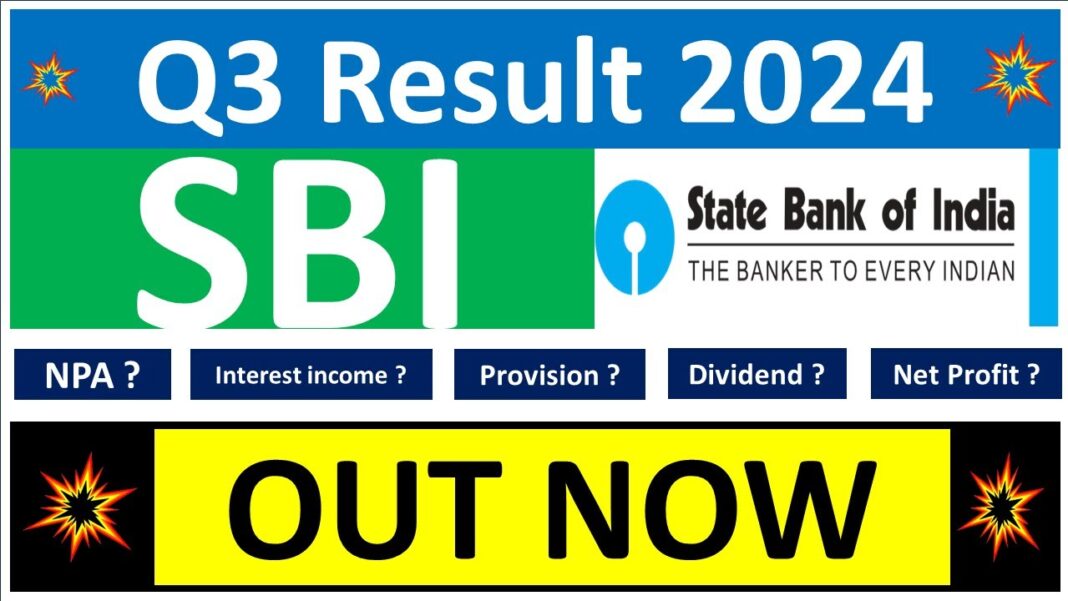Sbi q3 results 2025
STATE BANK OF INDIA (SBI), the country’s largest public sector bank, is set to announce its third-quarter results on February 6, 2025. Experts are expecting a strong double-digit growth in the bank’s net profit for the December quarter, with projections indicating a rise of 58-65% year-on-year (YoY), reaching ₹14,500–₹15,250 crore. This robust performance is likely driven by growth in loans and deposits, as well as stable asset quality.
However, there may be a sequential dip in net profit compared to the previous quarter, where SBI posted a higher net profit of ₹18,331 crore. The bank’s net interest income (NII) is projected to increase by 4-6% YoY, likely reaching ₹41,600–42,440 crore. Analysts are also anticipating strong double-digit growth in both loans and deposits.
Investors will be closely watching the management’s insights during the results announcement, particularly regarding credit growth trends in the industry, along with key financial metrics like loan and deposit growth, net interest margin (NIM), and the status of gross and net non-performing assets (NPAs).
As of February 5, ahead of the sbi q3 results 2025 shares closed at ₹766, reflecting a 1.6% drop.
Technical Analysis
SBI shares are currently trading below all of its major exponential moving averages (EMAs), including the 21, 50, and 200-day averages. On the daily chart, a bearish engulfing pattern has formed, signaling potential weakness. However, it’s important to remember that this bearish engulfing pattern is a reversal signal and will be fully confirmed only if the next candle closes below the low of the pattern.
Options Outlook
For the February 27th expiry, SBI’s at-the-money (ATM) options have a strike price of ₹770, with both call and put options priced at ₹47. This suggests a potential price movement of around ±6.1% from the closing price on February 5th.
To gain deeper insights, let’s now take a look at SBI’s historical price trends around its earnings announcements.
Volatility-Based Strategies for SBI Options
1. Expecting Increased Volatility: Long Straddle Strategy
If traders anticipate a rise in volatility for SBI, a Long Straddle could be a suitable approach. This involves buying both an at-the-money (ATM) call and ATM put option with the same strike price and expiry. The strategy benefits if SBI’s price moves significantly beyond the expected ±6.1% range in either direction.
2. Expecting Lower Volatility: Short Straddle Strategy
For those who expect volatility to remain low, a Short Straddle might be the better choice. This strategy involves selling both an ATM call and ATM put option with the same strike price and expiry, profiting if SBI’s price remains within the ±6.1% range.
3. For Bullish or Bearish Movements: Directional Spreads
If you’re anticipating a specific price direction, you may prefer a more strategic approach than simply buying options.
Bullish Outlook: Bull Call Spread
For a bullish view, traders can consider a bull call spread. This strategy involves buying a call option and selling another call option with a higher strike price and the same expiry date. This reduces initial costs but also limits the potential upside.
Bearish Outlook: Bear Put Spread
Conversely, if expecting a price drop, a bear put spread could be an ideal choice. This strategy involves buying a put option while selling a lower strike put, balancing risk and reward effectively.
Learn More and Get Expert Insights
For in-depth understanding of Straddle strategies, check out our Up Learn educational content. Interested in historical earnings price data? Join our community—we’re happy to share insights with you.
check 10 Canadian Portfolio Managers Are Responding to Tariffs and Their Top Advice for Investors
Disclaimer
The information provided above is for educational purposes only and does not constitute financial advice, investment recommendations, or an endorsement of any particular strategy. Trading and investing in financial markets carry inherent risks, and it is important to carefully consider your financial situation and seek advice from a qualified financial advisor before making any investment decisions. Past performance is not indicative of future results. We do not guarantee the accuracy or completeness of the information provided, and any trading decisions made based on this content are at your own risk.





Nice